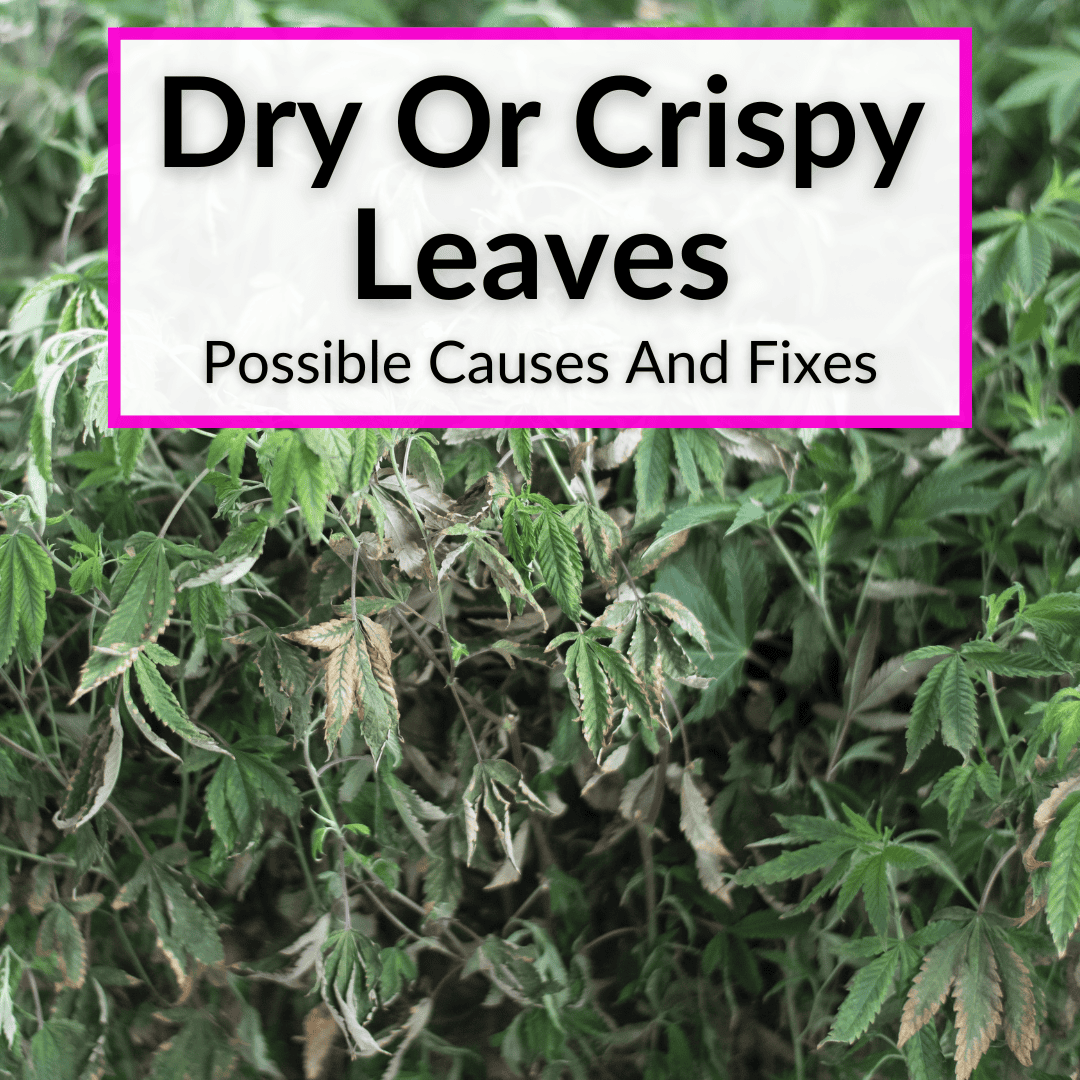 Do your cannabis plants have dry or crispy leaves?
Do your cannabis plants have dry or crispy leaves?
There are actually a number of underlying issues that can cause this symptom.
As a result, there is no single cure for it.
In order to treat dry or crispy leaves, you first need to figure out exactly what is causing the issue.
Then you can take steps to fix it. And prevent it from reoccurring in the future.
And that is exactly what you will learn today: how to identify the cause of crispy or dry marijuana leaves and what to do to remedy the problem.
Contents
Common Causes Of Dry Or Crispy Cannabis Leaves
As mentioned, there are a number of common causes of dry or crispy leaves on your weed plants. Let’s run through them all, to help you figure out what is causing the problem in your case.
Environmental Factors
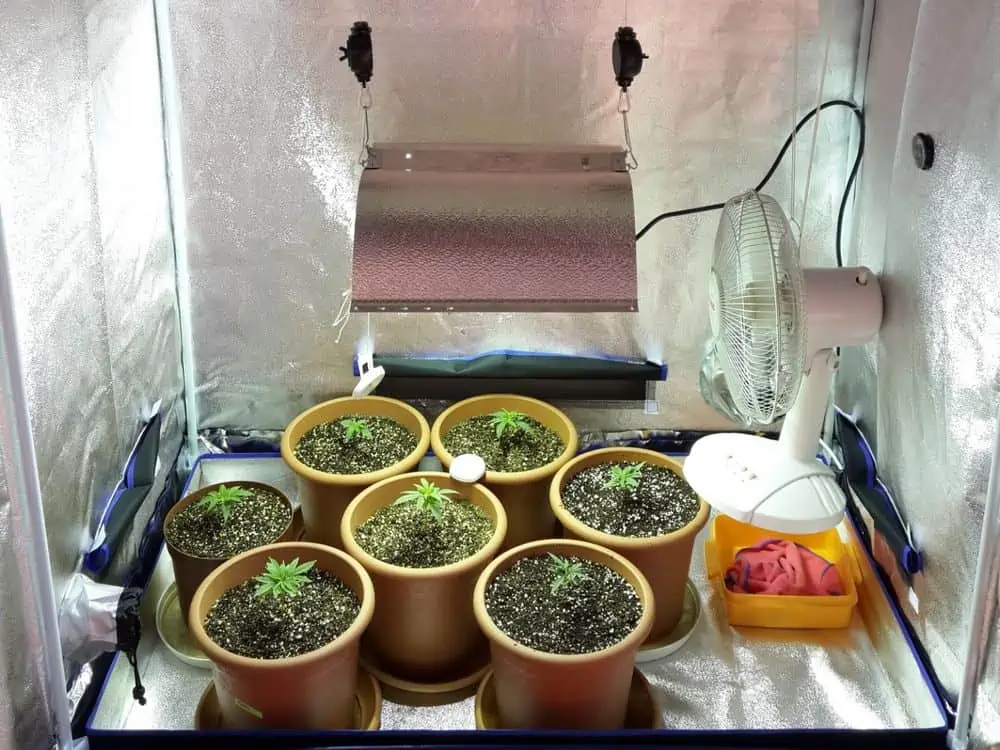
The first, and probably most common cause of crispy or dry leaves are problems with the growing environment.
Temperature Extremes
Temperature extremes, both high and low, can significantly impact the health of your cannabis plants. High temperatures can cause heat stress, which often manifests as dry, crispy leaves. You might notice leaf curling or browning at the edges as a result of this stress.
On the other hand, low temperatures can slow down plant metabolism and stunt growth, also leading to dry and damaged leaves. To prevent these issues, aim to maintain an ideal temperature range for your precious plants.
The optimal range is between 70° and 85° F (20° to 30° C) during the day, with slightly cooler temperatures at night. This range helps ensure your plants grow well without experiencing temperature-related stress.
Low Humidity
Humidity levels are also important for growing healthy cannabis plants. Low humidity can cause your plants to lose moisture too quickly, resulting in dry, crispy leaves. This condition, known as low humidity stress, can make leaves appear brittle and curled.
Cannabis plants rely on a balanced humidity level to maintain their water balance and overall health. Inadequate humidity can lead to a reduction in the plant’s ability to transpire properly, ultimately affecting its growth and vitality.
To combat low humidity, consider using a humidifier or placing water trays near your plants to maintain adequate moisture levels in the air.
Improper Lighting
Lighting is another critical environmental factor that affects the health of cannabis leaves. Both excessive and insufficient lighting can lead to problems.
Too much light, especially from high-intensity grow lights placed too close to the plants, can cause light burn. This condition results in dry, crispy leaves with bleached or brown spots.
Conversely, insufficient light can weaken the plant, causing leaves to yellow and dry out due to lack of energy for photosynthesis.
To prevent lighting issues, ensure that your grow lights are at the correct distance from the plants, typically about 12 to 24 inches, depending on the light intensity and type.
Nutrient Issues
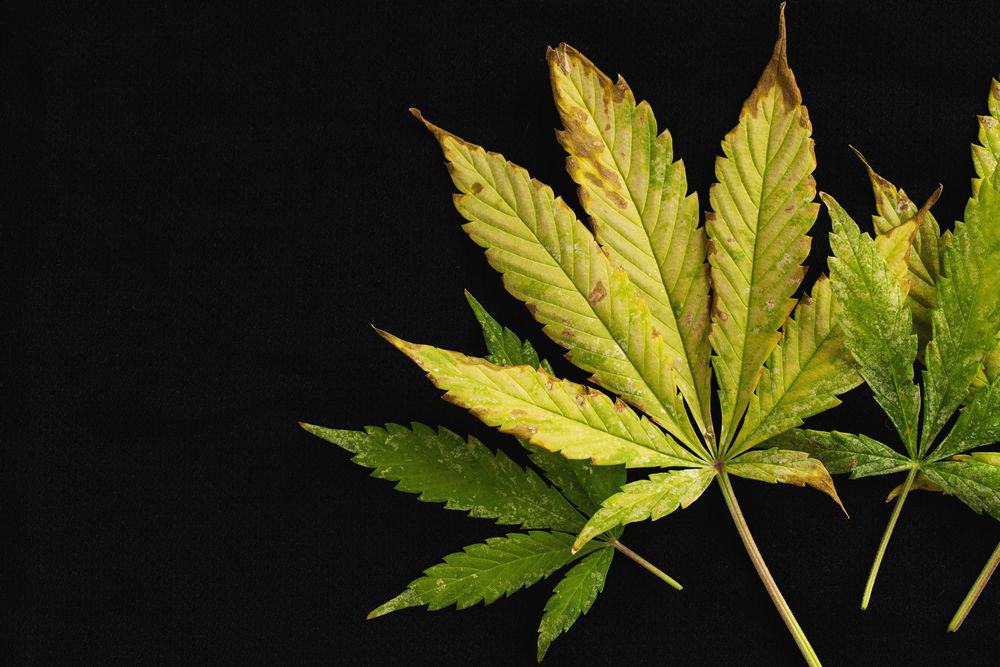
Nutrient problems can also cause this issue. specifically, it could occur because your plants are not getting enough of certain nutrients, or because they are getting too much of them.
Overfeeding
Overfeeding your cannabis plants can lead to nutrient burn, which is characterized by dry, crispy leaf edges and tips. This happens when the plants receive more nutrients than they can process, causing a build-up of salts and chemicals in the soil.
The symptoms include browning and curling of the leaf edges, indicating that the plant is suffering from excess nutrients. To fix this, flush the soil with plain water to remove the excess nutrients and adjust your feeding schedule to provide the correct amount of nutrients in the future.
Nutrient Deficiencies
Nutrient deficiencies can also cause dry or crispy leaves. Common deficiencies include nitrogen, potassium, and magnesium, each presenting distinct symptoms.
Nitrogen deficiency often results in yellowing leaves that eventually turn dry and brittle. Potassium deficiency typically shows up as yellow or brown leaf edges, while magnesium deficiency causes interveinal yellowing and drying of leaves.
To address these issues, identify the specific deficiency based on the symptoms and provide the necessary nutrients to the plant through appropriate fertilizers or soil amendments.
Watering Problems
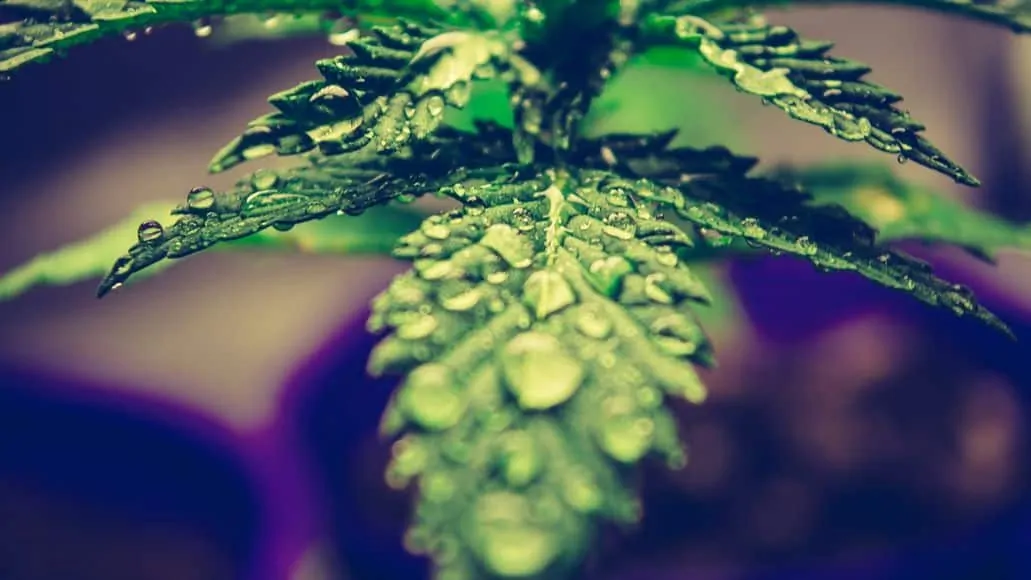
Finally, the leaves could dry out and become crispy due to a lack of water. Confusingly, they could also end up this way due to too much water!
Overwatering
Overwatering cannabis plants is a common problem that can lead to waterlogged roots, preventing them from absorbing oxygen properly. This condition causes the leaves to become yellow, swollen, and eventually dry and crispy as the roots suffocate.
To avoid overwatering, ensure that your plants are in well-draining soil and water them only when the top inch of soil feels dry to the touch. Proper drainage and an appropriate watering schedule are crucial to prevent waterlogged roots and maintain healthy leaves.
Underwatering
Conversely, underwatering can cause drought stress, also leading to dry, crispy leaves. When plants do not receive enough water, they cannot maintain proper turgor pressure, causing the leaves to wilt, curl, and dry out.
To prevent underwatering, establish a regular watering schedule based on the specific needs of your plants and the growing environment. Ensure that your plants receive sufficient water to keep the soil consistently moist but not waterlogged; think Goldilocks!
Pests And Diseases
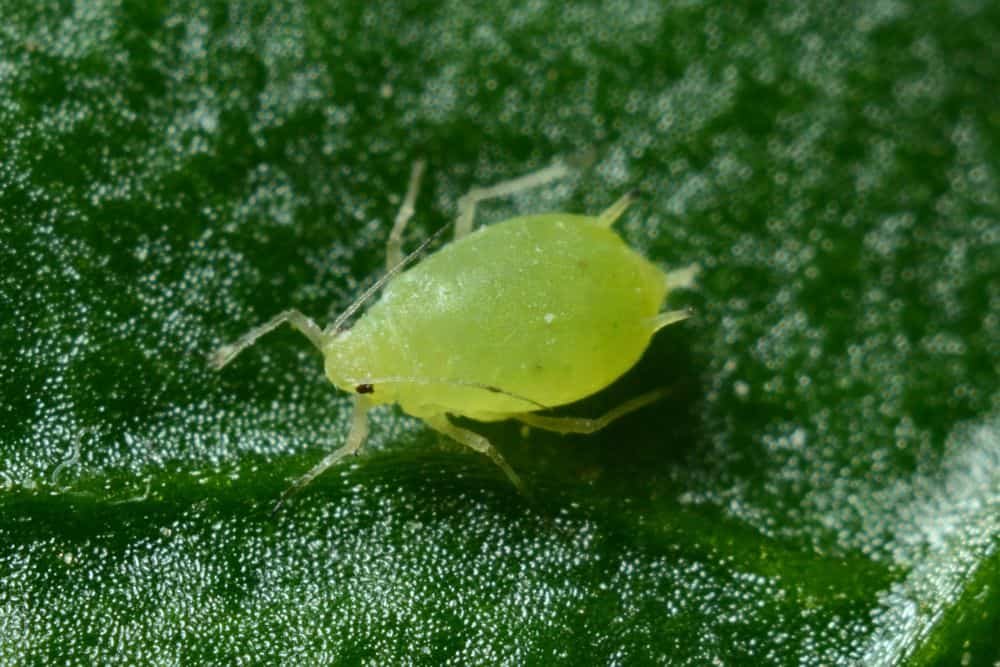
Pests and diseases are another common reason for dry and crispy leaves. And both can often be the result of environmental problems, too.
Common Pests
Various pests can infest cannabis plants, causing damage to the leaves which can leave them dry and crispy. Common pests include spider mites, aphids, and thrips, which feed on the plant’s sap and damage the leaf tissue.
Infested leaves may show stippling, discoloration, and eventually dry out and fall off. To prevent and treat pest infestations, regularly inspect your plants for signs of pests (including the undersides of leaves), use natural predators like ladybugs, or apply organic insecticides to keep the pest population under control.
Fungal And Bacterial Infections
Fungal and bacterial infections can also lead to dry, crispy leaves. Common infections like powdery mildew, botrytis (gray mold), and bacterial leaf spot cause visible symptoms such as white powdery spots, gray moldy growth, and water-soaked lesions that eventually dry out.
To treat these infections, remove the affected leaves and apply appropriate fungicides or bactericides. Ensuring proper air circulation and maintaining a clean growing environment can help prevent these infections from spreading and affecting your plants.
Fixes And Preventative Measures
Once you’ve identified what is causing your marijuana plants to have dry and crispy leaves, you will be able to fix the issue. Here is what you need to do.
Adjust Environmental Conditions
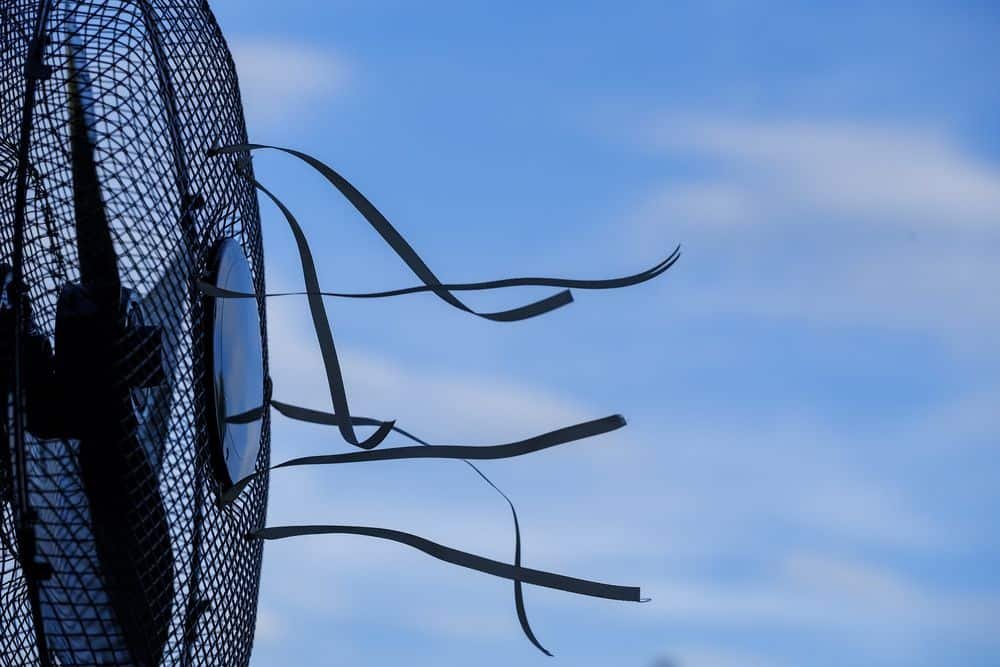
- Temperature Control Strategies: Keep the temperature between 70° and 85° F (20° to 30° C) during the day and slightly cooler at night. Use fans, air conditioning, or heaters to maintain this range, and regularly monitor temperatures with a thermometer.
- Humidity Management Techniques: Maintain relative humidity at 40% to 60%. Use a humidifier or mist your plants to increase humidity, and a dehumidifier or fans to reduce it, ensuring proper moisture levels in the air.
- Optimal Lighting Setup: Position grow lights 12 to 24 inches from your plants, adjusting as needed to prevent light stress. Use a light meter to ensure proper light levels and monitor plants for signs of light burn or stretching.
Nutrient Management
- Balanced Feeding Schedules: Follow a balanced feeding schedule based on your plants’ growth stages, providing more nitrogen during the vegetative stage and increasing phosphorus and potassium during flowering. Adjust gradually and observe plant responses to avoid overfeeding.
- Identifying and Correcting Deficiencies: Regularly check for nutrient deficiencies like yellowing or browning leaves. Use a nutrient chart to diagnose issues and adjust your nutrient mix accordingly to provide the missing elements.
Watering Practices
- Proper Watering Techniques: Water thoroughly but avoid overwatering. Check the top inch of soil; water when it’s dry. Use a moisture meter to ensure consistent soil moisture levels, preventing dry or waterlogged conditions.
- Ensuring Good Drainage: Use well-draining soil and containers with adequate drainage holes. Add gravel or perlite if needed and elevate pots off the floor to allow excess water to escape.
Pest And Disease Control
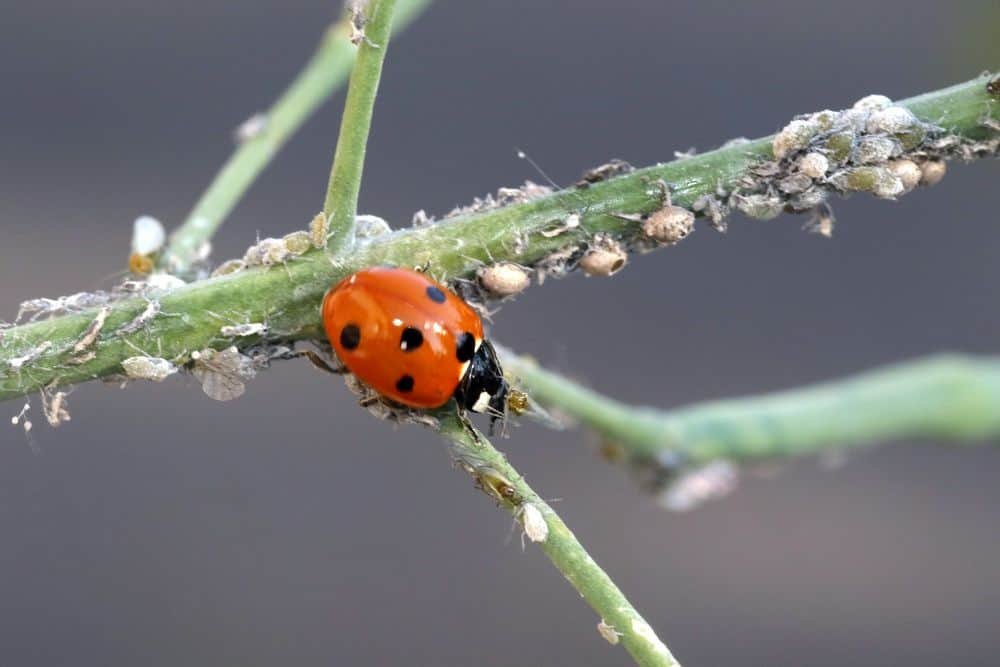
- Regular Plant Inspections: Inspect plants regularly for pests or diseases, checking under leaves, stems, and soil. Early detection helps address problems before they spread and do too much damage.
- Natural and Chemical Treatments: Use natural treatments like beneficial insects or neem oil first. For severe infestations, apply appropriate insecticides or fungicides, following instructions carefully to avoid plant damage.
Dry Or Crispy Leaves: Final Thoughts
Maintaining the health of your cannabis plants and preventing dry or crispy leaves involves a multifaceted approach.
By managing environmental factors such as temperature, humidity, and lighting, you can create an optimal growing environment that minimizes stress on your plants.
Ensuring a balanced nutrient regimen and proper watering practices are crucial to avoid nutrient burn, deficiencies, and water-related issues. Regular inspection and timely intervention for pests and diseases can further safeguard your plants.
Adopting these preventative measures and fixes will help you cultivate robust, healthy cannabis plants with vibrant, lush foliage and fat, juicy buds.
Leave a Reply